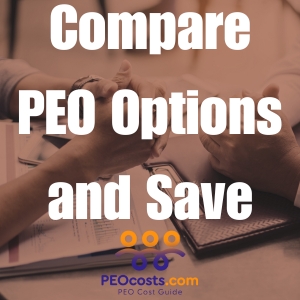
Co-Employment Explained: What It Means When You Partner with a PEO
If you’re considering outsourcing your HR functions to a professional employer organization, you may have come across the term co-employment. This arrangement is often misunderstood, leading business owners to worry that they might lose control over their workforce. In reality, co-employment is a strategic partnership that allows companies to streamline HR processes while maintaining full authority over their employees.
With a background in psychology and human resources from Harvard University and over eight years of experience running a successful PEO consulting firm in Massachusetts, I have helped many businesses navigate the complexities of PEO partnerships. Through my work with PEO Costs, I focus on helping business owners understand the co-employment model and its benefits.
Let’s break down what co-employment really means, how it benefits businesses, and what you need to know before entering into this type of PEO agreement.
What Is Co-Employment?
Co-employment is a shared employer arrangement between a business and a professional employer organization. The PEO handles administrative employer responsibilities such as payroll, benefits, tax filings, and compliance, while the business retains full control over daily operations and employee management.
This partnership allows businesses to outsource HR functions without losing authority over hiring, firing, and workplace decisions. The goal is to reduce liability and operational burden while maintaining full operational control.

How the Co-Employment Model Works
The business and the PEO each play distinct roles in the co-employment relationship.
The Role of the Business
The business, also known as the worksite employer, remains responsible for all day-to-day operations. It manages employee performance, determines job duties, and maintains company culture. While working with the PEO, the business ensures that workplace policies align with its objectives.
The Role of the PEO
The PEO, sometimes referred to as the administrative employer, handles HR functions that can be time-consuming and complex. This includes payroll processing, tax compliance, employee benefits administration, and workers’ compensation. The PEO also helps businesses stay compliant with employment laws, reducing the risk of legal issues.
While the PEO provides support and resources, it does not interfere with business operations or management decisions.
Why Businesses Choose Co-Employment
Many companies turn to co-employment to access HR resources that would be too costly or complicated to manage on their own. For small and mid-sized businesses, this partnership provides access to benefits, compliance support, and administrative efficiencies typically reserved for larger companies.
Access to Better Employee Benefits
One of the biggest advantages of partnering with a PEO is the ability to offer competitive benefits. PEOs can negotiate better health insurance rates, retirement plans, and wellness programs because they group employees from multiple businesses under a single benefits umbrella. This makes it easier for small businesses to offer packages that attract and retain top talent.
Payroll and Tax Compliance Support
Managing payroll and tax compliance can be challenging, especially with changing regulations. A PEO ensures that payroll is processed accurately and that taxes are filed correctly. This minimizes the risk of costly errors, missed deadlines, and potential fines.
Lower Workers’ Compensation Costs
PEOs also provide workers’ compensation coverage at a lower cost by spreading risk across multiple businesses. They assist in managing claims, reducing workplace risks, and improving safety standards, which can ultimately lower insurance premiums.

HR Compliance and Risk Management
Employment laws can be complicated and vary by state. A PEO stays up to date with regulations to ensure businesses remain compliant. This includes labor laws, anti-discrimination policies, and workplace safety requirements. Having an expert team to handle compliance reduces the risk of fines, penalties, and legal disputes.
Cost and Time Savings
Hiring an in-house HR team can be expensive. A PEO offers a full-service HR department without the high overhead costs. Business owners can focus on growth rather than spending time on administrative tasks.
Common Concerns About Co-Employment
While co-employment offers many benefits, some business owners hesitate due to misconceptions about how it works.
Business Owners Retain Control
A common concern is that partnering with a PEO means losing control over employees. However, the business always maintains authority over hiring, performance evaluations, and daily operations. The PEO only provides administrative support, not decision-making power.
Employees Remain with the Business
Another misconception is that employees become the PEO’s workers. Employees remain under the business’s leadership, while the PEO is listed as the employer of record for tax and benefits purposes. This allows businesses to offer better benefits while keeping their workforce intact.
PEOs Are for Businesses of All Sizes
Some believe that PEOs are only for large companies, but they are actually designed to help small and mid-sized businesses. Even companies with just a few employees can benefit from outsourced HR support.
Cost-Effectiveness of PEOs
There is a misconception that outsourcing HR functions through a PEO is expensive. In many cases, businesses find that PEOs help them save money by reducing HR overhead, securing better benefits, and lowering workers’ compensation costs.

Is Co-Employment Right for Your Business?
Co-employment is an excellent option for businesses that want to improve efficiency, enhance employee benefits, and ensure compliance with labor laws. Companies that struggle with HR management or want to reduce administrative burdens can benefit significantly from a PEO partnership.
Businesses that may benefit from co-employment include those looking to expand their workforce, improve compliance, or offer better employee benefits without increasing costs. If payroll processing, tax compliance, and HR responsibilities take too much time and resources, a PEO may be the solution.
Final Thoughts
Co-employment is not about giving up control. It is a strategic partnership that allows businesses to outsource HR functions while focusing on their core operations. By partnering with a PEO, companies can improve compliance, provide better employee benefits, and streamline payroll and tax management.
For businesses looking to scale efficiently, reduce HR workload, and improve employee satisfaction, co-employment can be a game-changer. Choosing the right PEO ensures that businesses get the support they need while maintaining full control over their workforce.
About the Author
Carol Sanders is a Harvard University graduate with a degree in psychology and human resources. As a writer and editor for PEO Costs and the owner of a successful PEO consulting firm in Massachusetts for eight years, Carol specializes in HR outsourcing, co-employment agreements, and business efficiency solutions.


